Writer Joseph J. Airdo // Photography by Tom Mangelsdorf
Having photographed rosy-faced lovebirds for many years and regularly observed their behavior, wildlife photographer Tom Mangelsdorf believes that the species is truly emblematic of Valentine’s Day.
“Rosy-faced lovebirds are very social and affectionate, and they tend to perch together as couples,” Mangelsdorf says. “They will feed each other or just touch their beaks together in recognition of their bond to one another.”
Additionally, although they tend to be very active throughout the day, lovebirds snuggle close to their mates at night and turn their faces toward one another while sleeping.
“Rosy-faced lovebirds mate for life,” Mangelsdorf explains. “If one of them dies, the survivor will often show uncharacteristic behavior similar to what humans refer to as depression.”
In honor of Valentine’s Day this month, Images Arizona is showcasing some of Mangelsdorf’s photographs of these fascinating feathered creatures, from whom we can learn a thing or two about affection.
It is our hope that February’s photo essay sets your heart aflutter, inspiring you to cuddle up closer to the one you love and do something special this Valentine’s Day to cause their cheeks to blush brighter than the faces of these beautiful birds.
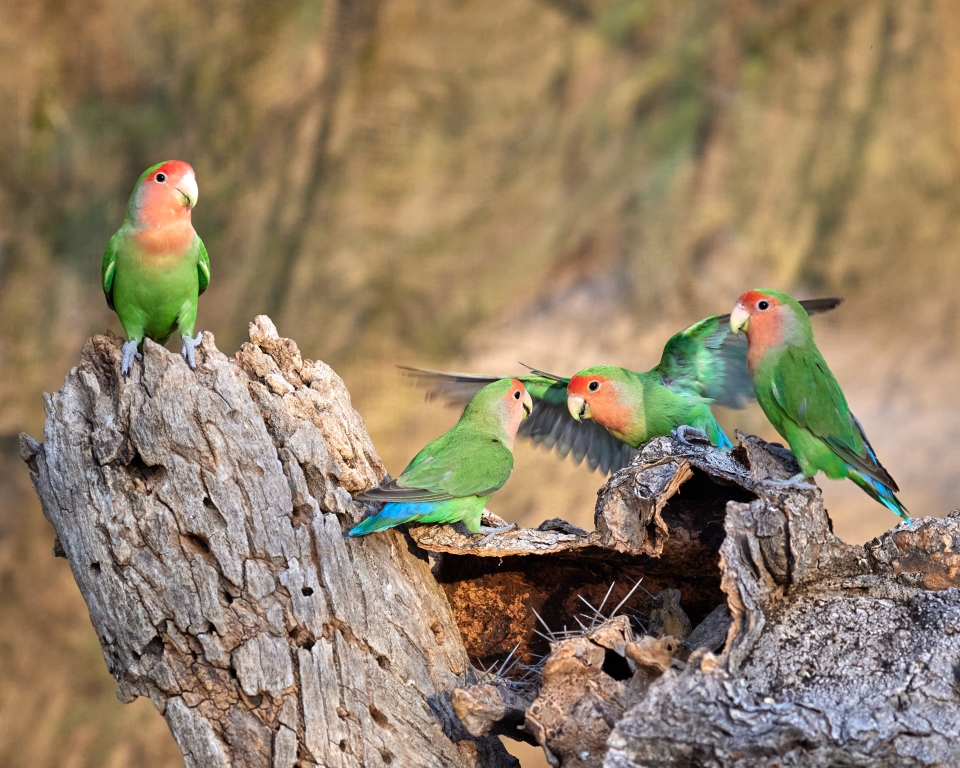


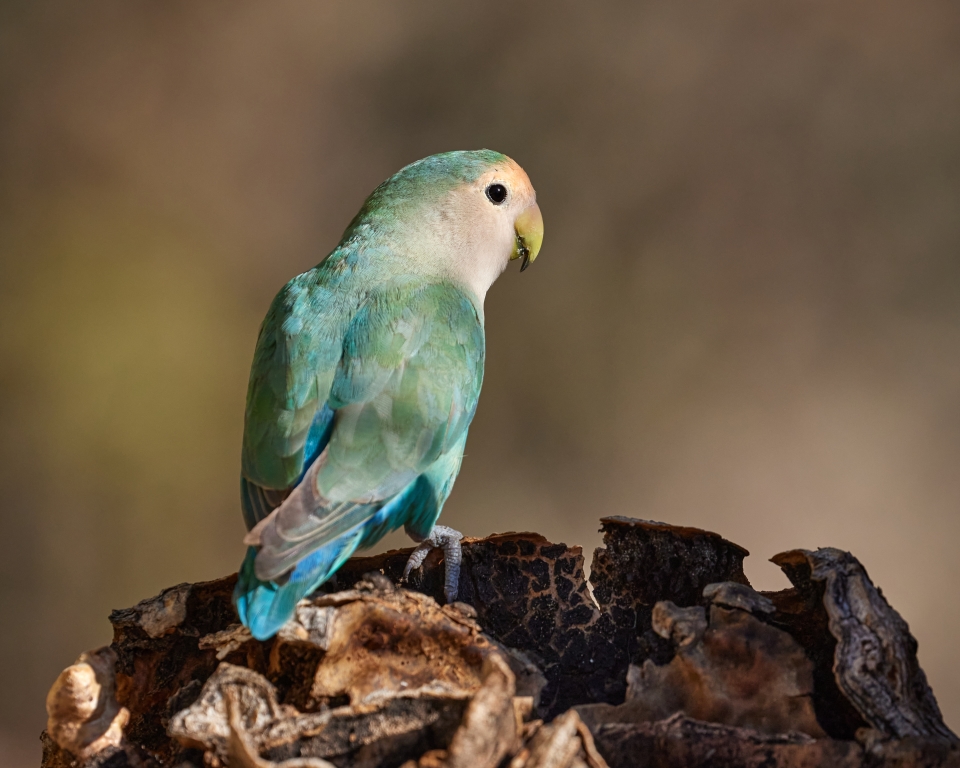


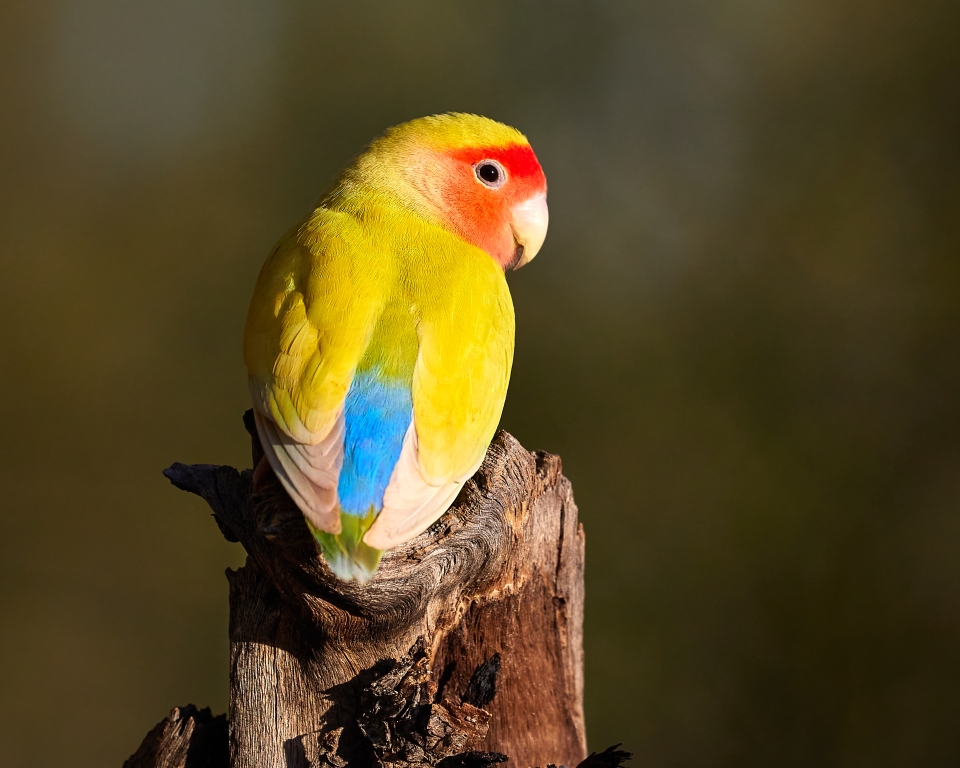


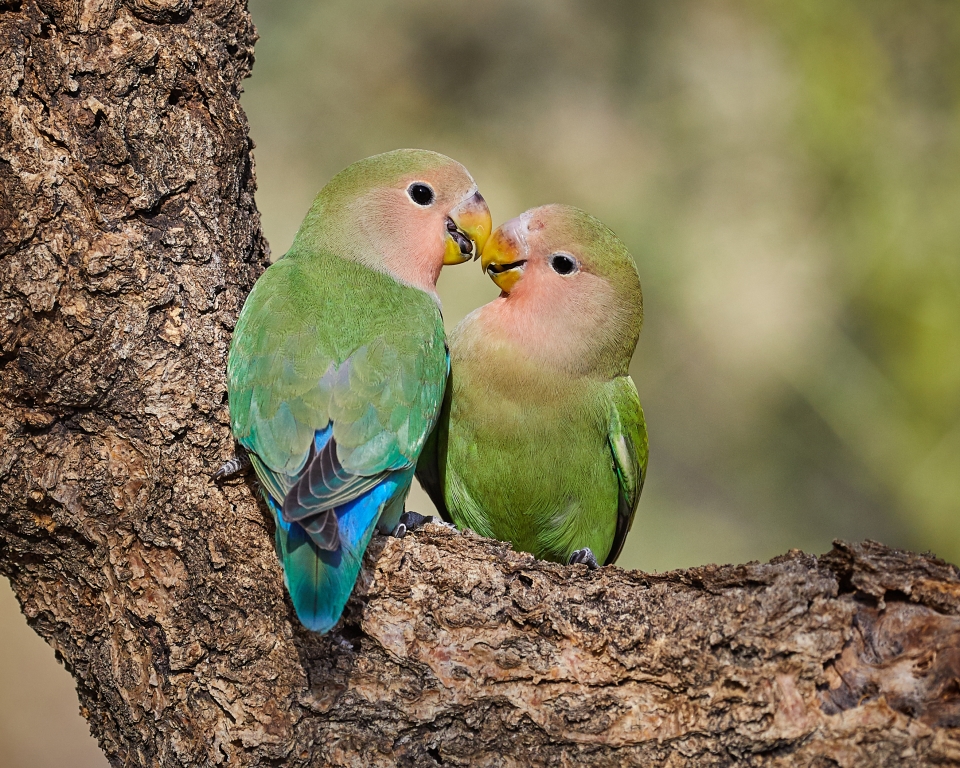





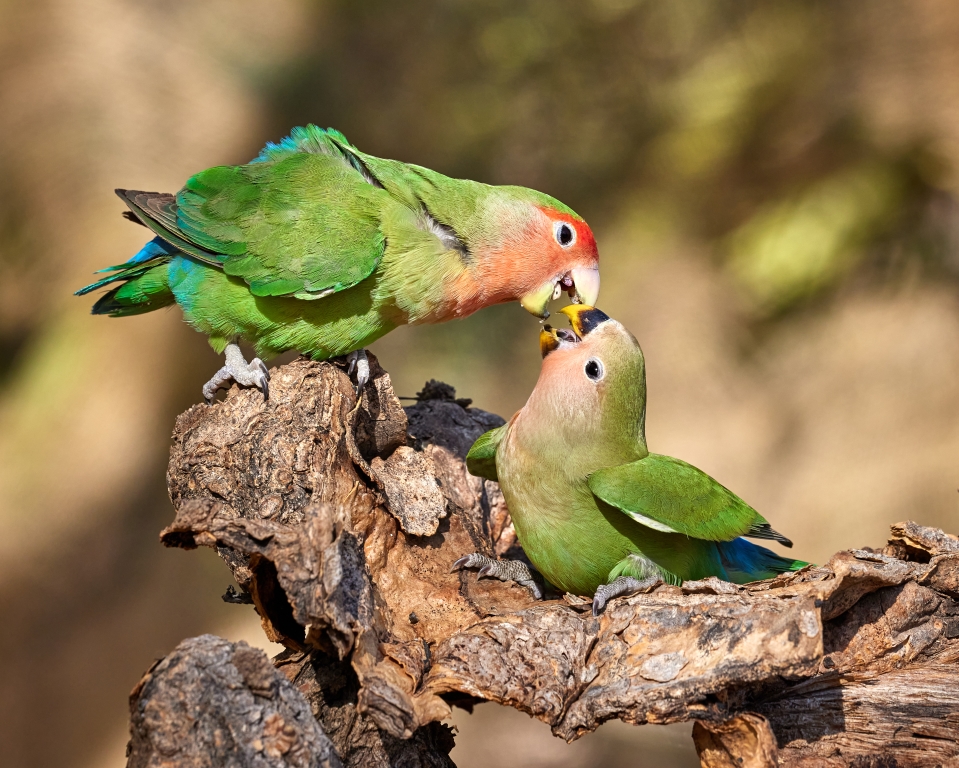


Release the Doves… er, Lovebirds!
According to the National Audubon Society, the first documented sighting of lovebirds in Phoenix occurred about 40 years ago.
“Sometime in the mid-1980s, someone turned loose several rosy-faced lovebirds in the greater Phoenix area,” says photographer Tom Mangelsdorf, noting that the species — formerly referred to as peach-faced lovebirds — is native to the southwestern, sub-Sahara parts of Africa.
“It may have been done accidentally or by someone who had grown tired of their pets, but that small, initial release has led to an ever-expanding family of more than 2,000 wild lovebirds that have spread throughout much of Phoenix and its surrounding communities.”
Mangelsdorf notes that pet birds typically do not survive if they escape into the wild.
“But lovebirds have beaten the odds — perhaps because of their native African desert habitat, which is similar to our Sonoran Desert,” he says. “Despite their beautiful peach, blue and green coloration, these small parrots are difficult to spot in their desert environment. In fact, you might hear their shrill screeching before you see them.”
Mangelsdorf considers himself extremely fortunate to have, across from his Scottsdale home, several large saguaros in which 15–20 rosy-faced lovebirds have chosen to make their nest.
“We have shared the same little community for nearly five years,” the photographer says. “Being good neighbors, they frequently visit my yard at feeding time. In exchange for some sunflower seeds, my avian neighbors have agreed to allow me to photograph them.”



About the Photographer
Tom Mangelsdorf first dreamed of making photography his career during his early 20s. While living in Carmel, California, he briefly attended photography school in Santa Barbara until life interrupted his photographic ambitions.
“There was a war on, so I finished a degree in political science at the University of California, Santa Barbara, and joined the Navy as an intelligence officer during the Vietnam War era,” explains Mangelsdorf, who returned to the Monterey Peninsula following his discharge before moving to Scottsdale in 1991. “In civilian life, I have spent more time than I ever wanted to in the corporate world doing technical writing, marketing and working with computers and software,” he adds.
After his retirement as an information systems manager/web content developer, Mangelsdorf’s interest in photography emerged from a decadeslong slumber — with a particular focus on birds.
“There is something especially wonderful about birds, and I use my camera to capture those unique avian characteristics,” the photographer says. “I am not an ornithologist or a typical bird-watcher. I simply enjoy birds on a more general level. I capture their portraits without trying to explain the scientific or technical details of either bird life or photographic jargon.”
In addition to being a frequent writer and photography contributor for The Cactus-Wrendition, the quarterly publication of the Maricopa Audubon Society, Mangelsdorf will have five of his photographs featured in “Birds of Arizona and New Mexico: A Photographic Guide to Birding the Borderlands,” a field guide set to be published this year.
He has also published four of his own books — including “Born in a Burrow,” a look at the endearing lives of burrowing owls, and “Time Slices,” a personal narrative with photographs of various species of Arizona birds, both of which are available digitally on his website.






Comments by Admin